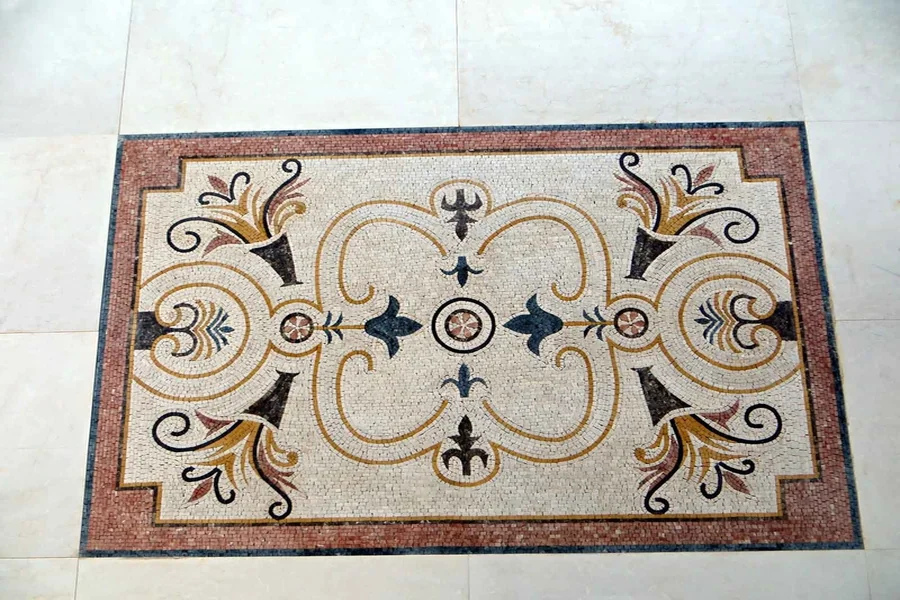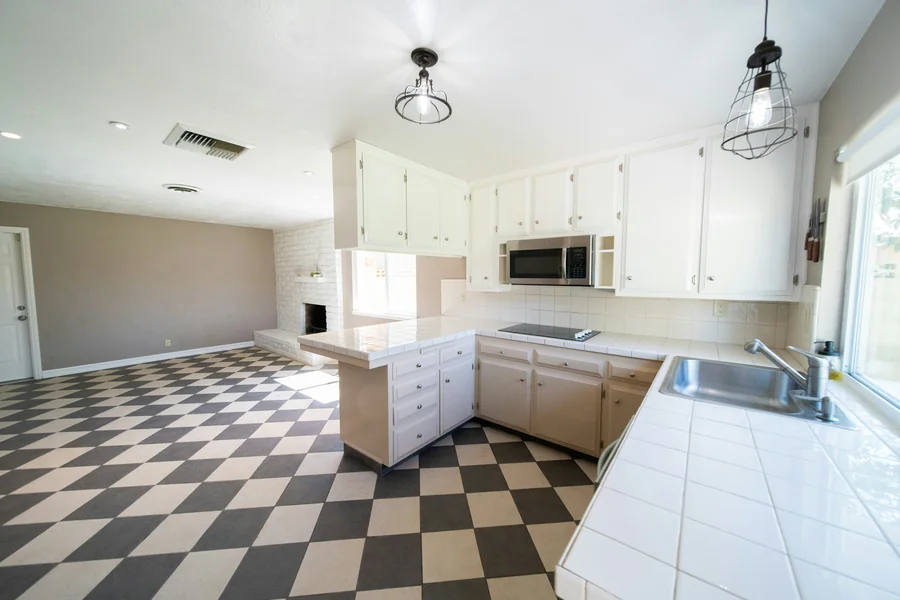The moment one steps into a home, the first impression is not just seen, it is felt. Beneath every arrival, every quiet movement, and every gathering lies a silent narrator: the floor. It grounds, guides, and gives rhythm to domestic life. Once viewed merely as a background surface, the floor has become one of design’s most expressive media, capable of shaping atmosphere, emotion, and flow.
“Soft architecture” is the term increasingly used to describe this sensibility, a way of thinking about spatial design that relies not on walls or partitions, but on subtler, more tactile cues. Within this framework, the floor becomes an architectural canvas: defining space, suggesting transitions, and telling stories through pattern, texture, and tone.
The Foundation of Movement
At its essence, every floor is a map of movement. It traces the paths we take through the day, from the soft morning ritual of bare feet on timber to the quiet crossing of cool stone in the evening. These sensory experiences form the emotional topography of a home.
In traditional architecture, boundaries were marked by walls and thresholds. Rooms were enclosed, and each had a clear identity. But as contemporary living has become more open, the role of architecture has shifted. The modern home now relies on “soft” delineations to create a sense of order within fluid space. Floors have emerged as one of the most effective tools in this subtle choreography.
A change in texture can signal a shift in function: the grain of oak giving way to polished concrete as one moves from a living area into a kitchen; the warmth of wool underfoot distinguishing a reading nook from a circulation zone. In open-plan living, such transitions are vital. They establish rhythm and intimacy without interrupting the visual or social flow of space.
By modulating tone, material, or pattern, designers can suggest direction and atmosphere simultaneously. A gently variegated stone floor can slow movement, inviting pause, while a long, linear plank layout can propel one forward with quiet momentum. In this way, the floor becomes a storyteller of pace and purpose.
Material as Emotion
Floors engage the senses in ways that few other elements of design can. We touch them constantly, often unconsciously. Their materiality carries emotional charge: the cool stability of marble, the yielding comfort of cork, the grounding roughness of clay. Each material tells a different story about how we wish to inhabit our surroundings.
Stone suggests permanence and endurance, making it a natural choice for ritual areas, such as kitchens, bathrooms, and halls. Wood speaks of warmth and familiarity, offering a rhythm that expands with time as its surface develops patina. Resin or terrazzo introduces a contemporary continuity, a seamlessness that speaks to modern minimalism yet allows infinite play with colour and aggregate.
Layering materials within a single floor plan can become a language of contrast and connection. Designers often treat this as a compositional art: how one texture bleeds into another, how colour gradients shift subtly to create zones, or how a border pattern frames a social space within a larger room.
Patterns as Pathways
The human eye reads patterns as direction. Historically, artisans used this instinctive response to guide movement through grand interiors: elaborate parquetry in châteaus, geometric encaustic tiles in Victorian townhouses, or the elaborate inlays of Renaissance halls. Today’s designers are rediscovering this principle, using pattern not as ornament but as cartography.
In a modern context, the floor can serve as a kind of soft navigation system, helping open spaces feel legible and intuitive. A subtle shift in herringbone angle might lead guests toward the dining area; a border of small-scale tile can define a seating zone without the need for furniture barriers. The success of such a design lies in restraint. The most evocative patterns are those that whisper rather than shout, encouraging movement through suggestion rather than instruction.
This approach transforms the act of walking through a space into an experience of discovery. Each transition feels deliberate and sensory. The floor becomes both the stage and the script for the home’s unfolding story.
The Poetics of Thresholds
Every home is made of thresholds: the moments where one atmosphere yields to another. Nowhere is this more clearly expressed than on the floor. The meeting point between materials marks a change not only in function but in feeling: the threshold becomes an emotional hinge.
Consider the quiet satisfaction of stepping from hard hallway stone onto the softness of a living room rug, or the sudden clarity of cool tiles beneath one’s feet on a summer morning. These tactile contrasts create rhythm and anticipation, turning ordinary movement into ritual.
Designers often exploit these moments of transition to anchor a home’s identity. An entryway mosaic floor, for instance, can serve as both welcome and introduction: a tactile signature that sets the tone for what follows. It is a way of saying, before any wall or colour can speak, “this is where the story begins.”
Beyond entrances, thresholds between interior and exterior have taken on new significance. As homes increasingly blur with gardens, terraces, and courtyards, flooring becomes the medium that binds them. Continuity of tone or texture between inside and out allows space to breathe as a single narrative. At the same time, a deliberate shift in finish can emphasise the transition from domestic comfort to natural freedom.

Floors as Artworks
There is a growing appetite for flooring to act not merely as a foundation but as a canvas: a site of artistic expression integrated into the architecture itself. Artisans and designers are collaborating to create compositions that function both as surface and statement.
Some approaches are painterly, using colour washes or polished pigments to create depth. Others are sculptural, introducing slight elevation changes or embedded materials that catch light. A particularly captivating trend is the reinterpretation of historical craft through contemporary sensibility: the revival of inlay, terrazzo, and mosaic as forms of modern storytelling.
A mosaic rug, for example, offers an unexpected blend of precision and softness. Crafted from stone or ceramic tesserae, it mimics the intimacy of a textile but with permanence and durability. Positioned beneath a dining table or in a hallway, it provides both a visual anchor and artistic punctuation. The interplay of materials becomes almost musical: the crisp rhythm of geometry meeting the organic movement of daily life.
Light, Shadow, and the Living Surface
A floor’s story is never static. It changes throughout the day, shaped by shifting light and the patterns of use. Morning sun grazing across timber reveals its grain; dusk draws out the sheen of stone; the glow of lamplight softens the edges of terrazzo flecks. This temporal quality makes flooring one of the most dynamic components of interior design.
Designers often speak of “reading” a space through its light, but floors, too, read the light back: reflecting, absorbing, or diffusing it in subtle ways. A matte finish absorbs warmth and invites calm; a polished surface amplifies daylight and creates a sense of openness. The interaction of light and material determines how a room feels at different hours, how expansive or intimate it becomes.
Over time, the floor records life. Small scratches, soft fading, and uneven wear become part of the narrative. These marks of use are not flaws but evidence of living — the visual memory of footsteps, gatherings, and quiet moments. A well-designed floor invites this patina, embracing transformation as part of its beauty.
Spatial Storytelling in Practice
To see floors as storytellers is to approach design as choreography rather than composition. The goal is not to decorate but to orchestrate movement, mood, and meaning. This perspective has become especially important in homes where openness demands subtle cues of differentiation.
In a large kitchen-living space, the choice of flooring can establish hierarchy without division. Stone under the cooking area suggests resilience and grounding; timber in the adjacent seating zone brings warmth and acoustic softness. The transition between the two materials becomes a moment of quiet emphasis, guiding the body almost imperceptibly.
In bedrooms, floors contribute to intimacy through tactility and temperature. A layered surface of wood and wool creates visual depth while absorbing sound. The combination feels enveloping, cocoon-like, in contrast to the more reflective surfaces elsewhere in the home.
Even in bathrooms, where durability and moisture resistance often dominate decisions, texture remains a tool of storytelling. The shift from smooth tiles near the vanity to subtly textured stone in the shower communicates both safety and sensuality, a choreography of touch that enhances the ritual of daily life.
Each of these gestures reinforces the idea that design is a sequence, not a snapshot. The story of a home is written in movement, and the floor is its script.

